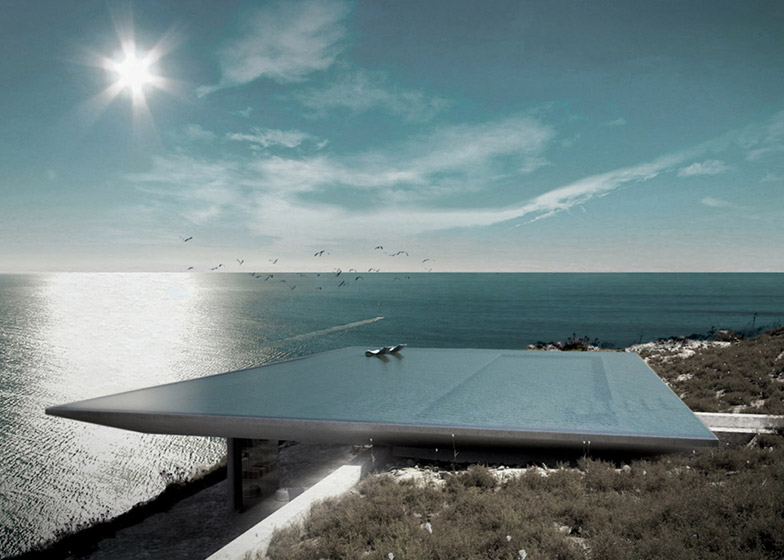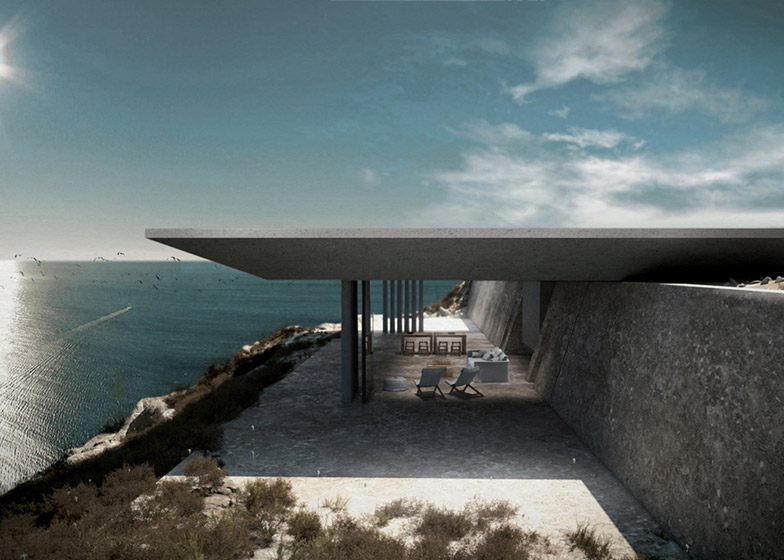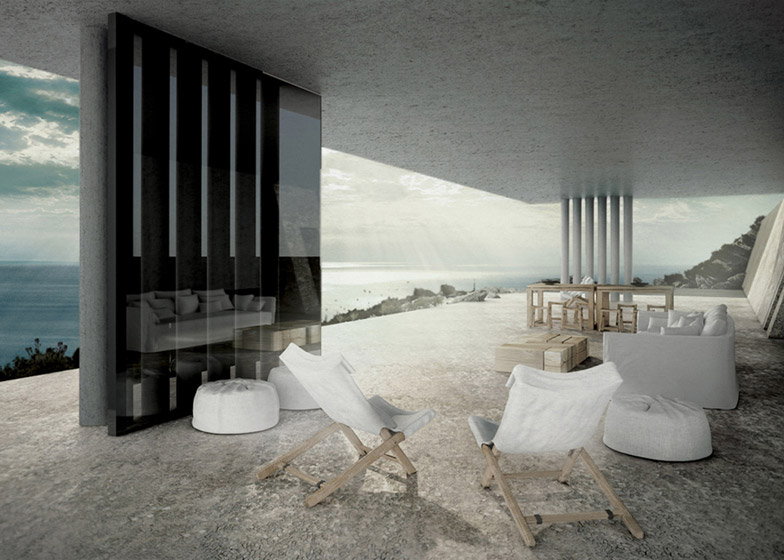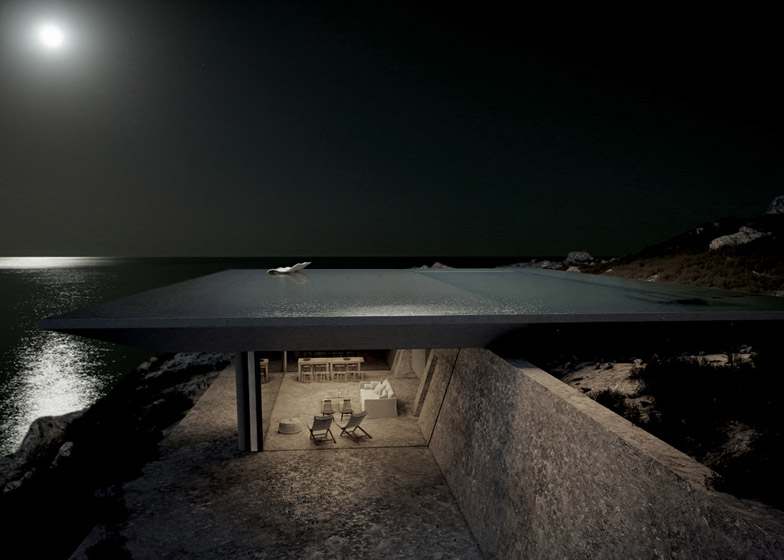Mirage House with Rooftop Infinity Pool

Is there water on that rooftop, or is it just a mirage? It’s hard to tell until you approach this hidden home, nestled into the hills of Tinos Island in Greece’s Cyclades archipelago. Athens-based Kois Associated Architects created an infinity pool on the flat, cantilevered rooftop of the appropriately named ‘Mirage House’ that seems to blend into the adjacent Aegean Sea.
From ground level, that sparkling water is the only part of the house that’s visible to onlookers, and it’s difficult to tell where it ends and the sea begins. Kois Associated Architects envisioned the home as “an invisible oasis” with all of the interior spaces tucked into the rocks to create a cavernous feel.
To grant their clients’ wish for a home that was virtually undetectable and as private as possible, the firm decided to mimic elements of the landscape. The visible parts of the home fronting the sea are made of dry stone, echoing both the natural rocks of the cliffs and the vernacular architecture and infrastructure of the island.
The single-level structure features rammed earth walls in the rear of the home. This ancient building technique produces walls that are strong, durable and noncombustible, naturally balancing the temperature and humidity levels with their thermal mass and breathability.
“Our goal was to integrate the building into the landscape like it was part of it. The living space is covered by a rimless pool that produces a visual effect of water extending to the horizon, vanishing and merging with the seascape. From a distance especially if viewed from the path of approach, on a higher ground, the only visible feature of the house is the water of the pool. The water during the day reflects the surrounding rock formations and during the night the star filled night sky. Most of the visible construction materials were found in the vicinity and were used to make the house ‘disappear’ into the scenery.”
“Local techniques were also borrowed like the characteristic dry wall construction found in abundance in the island. This technique was implemented with minor modifications; on the side embankment walls in each side of the pool volume. The local materials have a low impact on the environment while also being very efficient as insulating materials. The rear walls are made of retained earth that regulates the temperature. The pool which acts as a roof provides insulation and protection from solar radiation and heat transmittance.”









